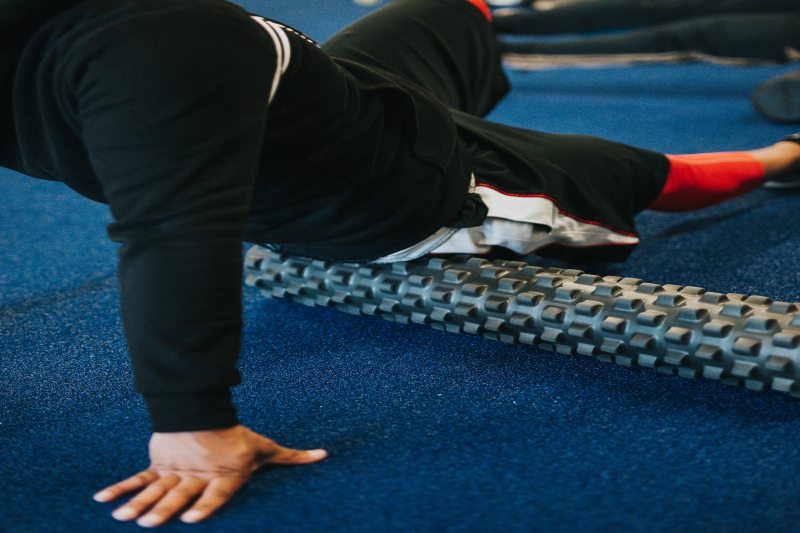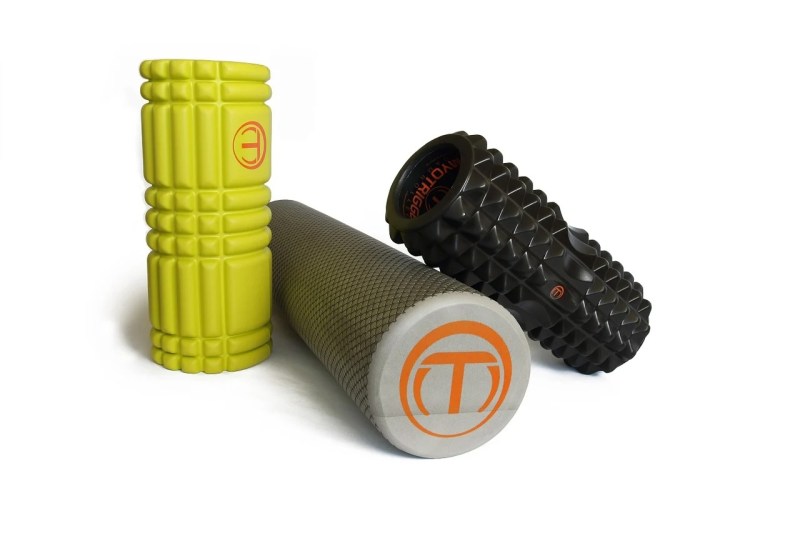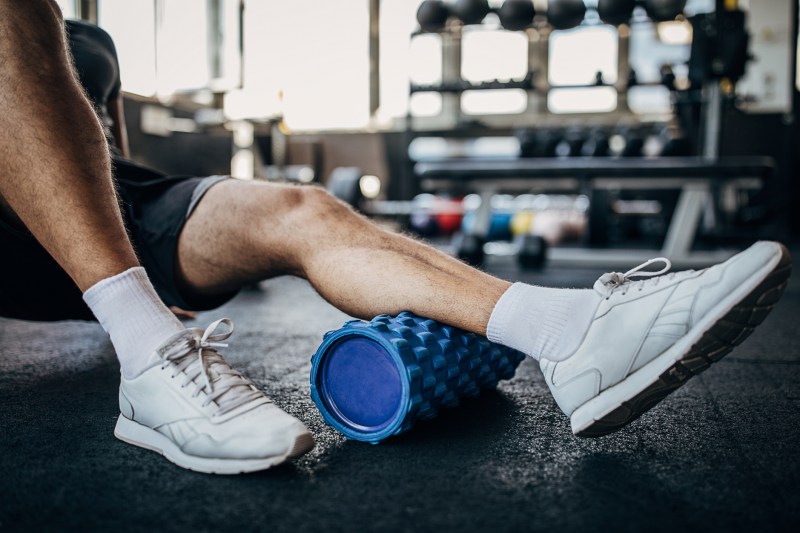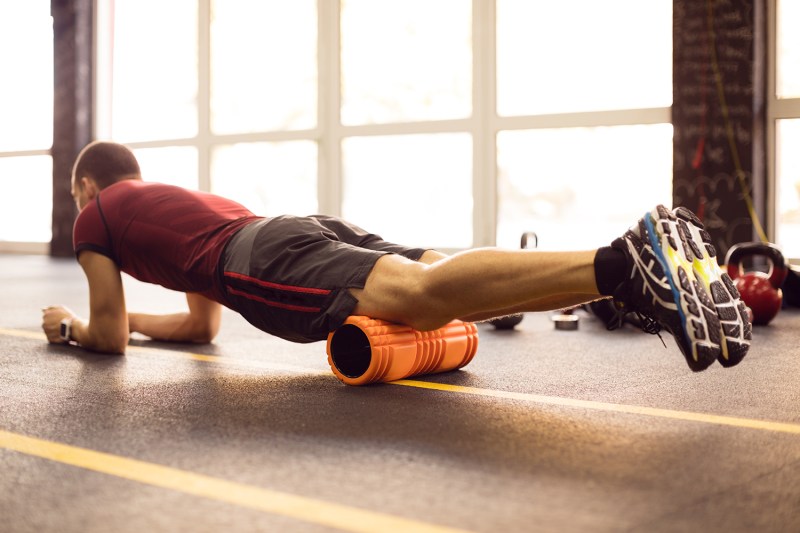
You may find that foam rolling can hurt, especially when you concentrate on certain muscles, but the love-hate relationship with this piece of recovery equipment is worth it. There are numerous benefits of foam rolling, and a foam roller can target various muscles, tendons, fascia, and other soft tissue.
Understanding the benefits of foam rolling may be the deciding factor that encourages you to fully embrace your foam roller for the helpful mobility tool it is and discover the best ways to improve the effectiveness of your foam rolling technique and routine.
And, if you’ve never played around with a foam roller, learning the benefits of foam rolling will help you decide if it’s time to jump on board this growing trend. Keep reading for our guide to the benefits of foam rolling, information on types of foam rollers, and tips to get the most out of foam rolling.

What is a foam roller?
A foam roller is a self-myofascial release (SMR) tool that is used to release tension in and increase the mobility of your muscles, fascia, and other connective tissue surrounding your joints. Although there are various shapes and sizes of foam rollers available these days, most are cylindrical, with a length of one to four feet and a diameter of five to ten inches.
A foam roller may be hollow or solid and it is typically constructed from dense foam or some sort of foam- or rubber-covered rigid plastic. The foam roller may be smooth or textured with various ridges and bumps.

How does foam rolling work?
Contrary to popular belief, foam rolling doesn’t physically break up knots in muscles; rather, it stimulates the nervous system to relax tension in the surrounding tissues. Essentially, foam rolling works by sending input to your nervous system via receptors in your muscles, tendons, and fascia.
As you roll over these soft tissues, the receptors send signals to the spinal cord. The parasympathetic nervous system responds by sending signals back to the muscles or tissues to relax. In doing so, foam rolling increases the range of motion in muscles and tendons and around joints.
Foam rolling also increases blood flow, aiding the delivery of oxygen and other nutrients to muscles. This can improve the effectiveness of a warmup routine and enhance recovery and removal of metabolic waste products accumulated in muscles after exercise.

Benefits of foam rolling
Foam rolling can be an effective manual therapy tool for both warming up tissues and preparing the body for a workout as well as aiding recovery after exercise. As such, consider adding foam rolling into your warm-up and cool-down routines. Here are the primary benefits of foam rolling:
Increases range of motion
Foam rolling before a workout can reduce stiffness and help your body feel more limber. As mentioned previously, foam rolling signals the parasympathetic nervous system to relax the muscles and tendons you are working on. As these tissues relax, the fibers move from a contracted state to an elongated state. This can increase the range of motion around the joint the muscles control, improving mobility and optimizing motion.
Increases circulation
Foam rolling increases blood flow to the tissues you work with the foam roller. This can be especially beneficial for fascia, tendons, and ligaments, which have relatively little blood flow under normal circumstances. Because blood carries oxygen, glucose, and other nutrients that muscles and connective tissues need to contract and repair, increasing blood flow enhances the delivery of vital nutrients and can maximize function and recovery.
If you have an injury or if you are sore after a workout, foam rolling can help encourage the removal of inflammatory waste products, flushing these tissues with fresh nutrients and circulating out toxins.
Warm up muscles
The friction generated by rolling over your tissues creates heat that warms up muscles, tendons, fascia, and other connective tissues. Warm tissues are more pliable and less likely to get injured, so adding foam rolling to your pre-workout routine can be an important step in mitigating the risk of injury, especially if you’ve been sedentary for a few hours before your workout.
Reduce muscle soreness
Research has found that foam rolling after a hard workout can decrease the intensity of delayed-onset muscle soreness (DOMS), the achy pain that can creep up 24-48 hours after intense exercise. Foam rolling helps prevent muscle adhesions and enhances the circulation of oxygenated blood to depleted muscles after exercise. In this way, foam rolling can reduce inflammation and soreness in and around muscles and joints.
Reduce pain
If you have pain due to stiffness, foam rolling can provide the stimulus your muscles need to relax, effectively easing pain. Research has demonstrated an improvement in reported back pain severity as well as chronic widespread pain for fibromyalgia sufferers with regular foam rolling.
Help you relax
Studies have found a psychological benefit of foam rolling as well, with reported feelings of relaxation, tension, and stress relief and an improvement in overall mood. Many athletes report that ending an exercise session with a gentle, full-body foam rolling routine simulates a massage and can increase feelings of overall well-being and workout satisfaction.
How to choose a foam roller
There are different types of foam rollers with different benefits.
- Smooth foam rollers: These are basic cylinders, generally constructed from dense foam. They are less intense than textured foam rollers and provide even pressure.
- Textured foam rollers: The bumps and ridges on textured foam rollers provide concentrated pressure to work knots and tight spots in tissues more precisely and aggressively. Textured foam rollers tend to be more expensive.
- Vibrating foam rollers: Newer to the market, vibrating foam rollers, such as the Theragun Wave Duo, combine the vibrating effects of a massage gun with a foam roller to enhance circulation, muscle relaxation, and therapeutic recovery.

What size foam roller do I need?
As we said earlier, foam rollers come in a variety of sizes. When it comes to choosing a foam roller, what size to get is generally a matter of knowing what parts of your body you are going to be using the foam roller on, as some sizes of rollers are better suited for specific uses.
If you are looking to work on larger muscle groups or you want to use the roller on your back, a longer foam roller is the better choice, as it will cover more area, and you can work more muscles at once. The downside to a longer roller is that it is less portable, so you probably won’t want to bring it with you when you travel. It is also harder to control the amount of pressure applied with a longer roller.
On the other hand, a shorter roller, while less practical for larger muscle groups, is a good choice to work on smaller areas, and it has the added advantage of allowing you easier control of the pressure applied to your muscles. Shorter foam rollers are also more portable, making them easier to travel with.




